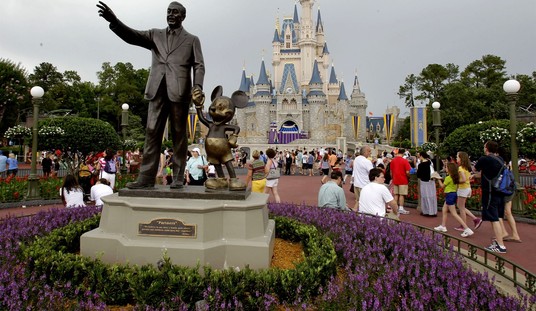
Today marks the anniversary of one of the most solemn days in modern history. One hundred years ago today, the Guns of August fell silent. Fighting in the First World War came to an end.
Of course, it wasn’t known as “The First World War” at that time. It was simply “The Great War”, and as historian David Reynolds has noted, what it led to at the time was not “the period between the wars” as we know it today, but rather “the post-war period” for those who lived through it. The horrified reaction of the world to the tremendous carnage led to revolution in Russia, as well as revolutions in the arts, music and literature.
For four years, Germans, Austrians, Italians, Frenchmen, Russians, Turks, Americans, Britons, South Africans, Japanese, and God only knew how many other nationalities had been set against each other in mortal combat.
The war had started with an explosion: the assassination of the heir to the Austro-Hungarian Empire’s throne, Archduke Franz Ferdinand, on June 28, 1914. The entanglements of international alliance soon brought Austria against Serbia and its powerful friend, Tsarist Russia: which in turn brought in Russia’s enemy, Germany; which declared war on both Russia and France, with Britain biding its time before joining their ancient enemy on the Western Front against the Germans on August 4.
Italy, long the arch-rival of Austria, entered on the side of the Allies to face what soon became known as the Central Powers: Germany and Austria-Hungary. That alliance would eventually grow to include the Ottoman Empire and Bulgaria.
And as such, Europe, and eventually many other parts of the world, were engulfed in war.
But this is about the end, not the beginning.
After the German government allowed a Russian exile named V.I. Lenin to travel across its borders on the way to Russia to foment revolution — which would result in the destruction of the Romanovs, victory for Germany over Russia and introduction of the evil of Communism to the world – the Central Powers had a unique opportunity.
Hundreds of thousands of men were released from duty in the East to fight in the West. While the United States hurriedly trained men to be placed into the conflict, the Germans mounted their last-ditch offensive before the Americans could join the fray.
Known as the Kaiserschlacht, or literally “Kaiser’s Battle”, the offensive was split into four code-named offensives: Michael, Georgette, Gneisenau, and Blücher-Yorck.
Michael was the main offensive, falling against the British Fifth and Third Armies. The British absorbed 1.1 million artillery shells fired on them in a five-hour span as the attack began. The Germans made great and instant gains, and two days into the battle the British were in full retreat.
However, the attack lacked a clear strategic objective, and eventually the Allies stopped the German drive near the crucial rail junction of Amiens. Farther to the south, the German advance was stopped short of Paris at the Second Battle of the Marne, though the capital was being shelled by German long range guns from the start.
And yet, while the Germans made their last great effort, it was for nothing. They were overextended and had gained ground they could not hope to hold with a depleted army. Nearly 1.4 million soldiers were killed or wounded on both sides during the Kaiserschlacht: the resulting Allied counterattack known as the Hundred Days Offensive forced the Germans to give up all the ground they had gained, and eventually to sue for peace.
Germany’s main allies were in little better shape. The British had carved the size of the Ottoman Empire down by about two-thirds, capturing Mecca, Medina and Jerusalem from the Turks; and even though the Austrians had decisively defeated the Italians at the Battle of Caporetto (otherwise known as the Twelfth Battle of the Isonzo, and yes you did read that number correctly), they were starving and spent.
German officers described being allied to Austria as being “shackled to a corpse.” There were food riots in Vienna in 1918 and after the death of Emperor Franz Joseph two years earlier after 68 years in power, the resulting vacuum was too much for his successor, Karl I, to endure. The Dual Monarchy was also ready to end the fighting.
On October 30, the German Navy mutinied at Kiel after refusing an order to sortie and fight to the death against the British Royal Navy. The Ottomans sued for peace that same day. Four days later, after the fall of Trieste, it was Austria-Hungary’s turn to request terms.
On November 7, the Army informed Kaiser Wilhelm of Germany that it no longer supported him, and 48 hours later the Kaiser abdicated his throne, paving the way for peace.
It should be noted here that contrary to some popular belief, the Treaty of Versailles did not stop the fighting. The armistice agreement which ended the war did – the Treaty followed after six months of negotiations of which the Germans were not a part. 414 of its 440 clauses either blamed Germany for the war or extracted provision from Germany, and was of course a major cause of the Second World War 20 years after its signing.
The Armistice did several things: first, of course, it stopped the fighting. It provided for the withdrawal of German forces across the Rhine River and back into Germany. It provided for Allied occupation of the Rhineland in Germany, which lasted until 1936; and it called for the release of Allied prisoners of war plus the surrender of military implements.
But when it was all said and done, the dead came from every nation that fought.
The total number of military and civilian casualties came to approximately 40 million, of which an estimated 15-19 million were fatalities and 23 million were wounded military personnel.
Therefore, I think it’s fitting that as this post is published at 11am Greenwich Mean Time on the 11th day of the 11th month one hundred years after the fact, that we turn to the words of Charles Hamilton Sorley for remembrance.
Sorley was a Scotsman, educated at King’s College School in Cambridge and University College, Oxford. He was the son of a philosopher, a poet, and eventually a soldier – and he was one of the forty million. He was killed in action at the Battle of Loos in France, in 1915 at age 20 — and was the author of “Such, Such is Death“:
“Such, such is Death: no triumph: no defeat:
Only an empty pail, a slate rubbed clean,
A merciful putting away of what has been.And this we know: Death is not Life, effete,
Life crushed, the broken pail. We who have seen
So marvellous things know well the end not yet.Victor and vanquished are a-one in death:
Coward and brave: friend, foe. Ghosts do not say,
“Come, what was your record when you drew breath?”
But a big blot has hid each yesterday
So poor, so manifestly incomplete.
And your bright Promise, withered long and sped,
Is touched, stirs, rises, opens and grows sweet
And blossoms and is you, when you are dead.”
Remember. And enjoy today’s open thread.












Join the conversation as a VIP Member